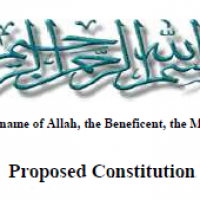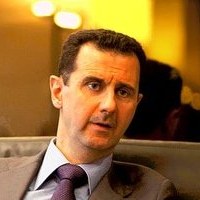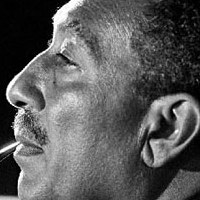![]()
Sun, June 19, 2011 | The Meir Amit Intelligence and Terrorism Information Center
The Muslim Brotherhood – Chapter 3: The Muslim Brotherhood’s education, preaching, and social activity
The Muslim Brotherhood is an Islamic mass movement whose worldview is based on the belief that “Islam is the solution” and on the stated aim of establishing a world order (a caliphate) based on Islamic religious law (Shariah) on the ruins of Western liberalism. With extensive support networks in Arab countries and, to a lesser extent, in the West, the movement views the recent events in Egypt as a historic opportunity. It strives to take advantage of the democratic process for gradual, non-violent progress towards the establishment of political dominance and the eventual assumption of power in Egypt and other Middle Eastern countries.
Overview
The Muslim Brotherhood emerged first and foremost as a movement that embodies an Islamic mission whose goal is to establish Islam as an “overall order” (political, social, and economic) throughout the world, and in Egypt in particular. It is a concept originating in Muslim Brotherhood founder Hassan al-Banna’s view of Islam as a comprehensive religious and cultural system that applies to all aspects of human life and may be implemented anywhere, at any time.
According to the movement and its founder, the establishment of such new Islamic order will be made possible only by the creation of a new Muslim society. As already mentioned, the creation process is multi-stage (consisting of seven stages) and long-term (without a definite timetable for the realization of the ultimate objective), starting with shaping the mind of the new Muslim individual. It is a person of strong faith, who follows Islamic religious law in all spheres of life and is familiar with its cultural tradition, and is deeply committed to the welfare of other Muslims, the Islamic nation, and God. It is the true believer, in the movement’s view, that will change his community, and such a community of believers will then change the entire Muslim nation.
The movement heavily emphasizes the issue of education (tarbiya) and preaching, which, with its welfare activity, comprise the pillars of the da’wah (taken as a whole)[26] of the Muslim Brotherhood, aimed at changing the Muslim nation.
Education and preaching
The movement’s view of education goes beyond imparting of religious or general knowledge — above all, it is education for values. Emphasis is placed not only on Quran and Sunna studies, but also on education to patriotism, love of one’s homeland, and love of the entire Muslim nation. This, according to the movement, requires the development of a sense of social responsibility, a desire to fight the ills of society (poverty, ignorance, crime, etc.), and an aspiration to create a model society based on the principles of Islamic justice and brotherhood.
In the movement’s early days, its curriculum even included physical education, since Al-Banna believed that sports builds discipline, self-confidence, cooperation, and friendship.[27] As a result of the emphasis placed on the significance of education, teachers’ training became the movement’s top priority, and its literature widely discussed the qualities that make the best teachers.
The Muslim Brotherhood began building its own education system as soon as it was established. At first, it was an informal network of schools and prayer classes all across Egypt, with studies held in the evenings and on Fridays and focused on religious themes. As part of the movement’s fight on analphabetism, its young missionaries began teaching in clubs, cafés, etc. By the 1940s, the movement’s education program was fully developed and included various disciplines in addition to religious themes, which remained the focus of the program.[28] The Muslim Brotherhood currently has schools in all of Egypt’s provinces, as well as various other education services (after-school activities, summer camps for adolescents, professional training and evening classes, supplementary lessons for children, and more) that provide an alternative to the official/statecontrolled education.
The preaching activities were given the most attention due to the importance the movement placed on spreading its religious and political message. Training in preaching and the development of oratory skills were already included in the curriculum of the first education network established by the Muslim Brotherhood. In 1951, Hassan al-Hudaybi, the second general guide, issued a call to create at least one school for preaching in each Muslim Brotherhood administrative office, and in 1953 the movement established its da’wah (preaching) academy in its Cairo headquarters. The aim of such institutions was to train professional preachers to compete with traditional and government-employed clerics for the hearts of the Egyptian public.
Throughout its existence, the movement put considerable effort into the publication of periodicals,[29] books, and leaflets, and the organization of conventions and religion classes. It also purchased publishing rights for articles and statements from newspapers’ and magazines’ publishing license holders.[30] In the 1940s the movement also began publishing books. It operates dozens of publishing houses, distribution centers for written publications, and libraries across Egypt. The movement’s publications are not limited to religious themes and also address a wide variety of other subjects (history, political, economic, and social issues, and news reports), expressing the movement’s stance on them.
The Muslim Brotherhood operates an extensive network consisting of tens of thousands of private mosques built with charity funds. The mosques are major preaching sites for the movement. Throughout its existence, however, the movement has been keen to harness the various tools provided by modern advances. A noteworthy example from the past decade is the adoption of Internet communication for propaganda, distribution of the movement’s messages, and improvement of its image in the Muslim and Western world.
Since 2000, the movement operates its official website, Ikhwanonline; in 2005 it launched an English-language website called Ikhwanweb. These are modern, news-oriented websites, reporting on developments in the movement and around the globe. The Muslim Brotherhood also has a streaming video website called Ikhwantube (its version of YouTube), which contains religious preaching themes. In addition, there are numerous other websites affiliated with the movement, and in 2007 the number of bloggers affiliated with it reached 150.
The welfare system
The popularity and extensive support the movement gained among the Egyptian people has been greatly facilitated by its network of welfare and health services for the weaker sectors of society. Such activities also stem from the Muslim Brotherhood’s ideology, emphasizing social responsibility and concern for the welfare of fellow Muslims. The creation of the network began immediately after the movement’s establishment. It was subdued under Nasser and experienced considerable resurgence under Sadat and Mubarak.
Similarly to the preaching and the education services, the welfare activity also revolves around the mosque. The movement provides the services through regional administrations directed by its administrative network. Islamic associations and NGOs across Egypt are a major platform for this purpose.
The movement provides health services (22 hospitals and a significant number of clinics); subsidized clothing and food; subsidies for students; social activities; separate transportation for women (to avoid contact between members of the opposite sex, including sexual harassment, which is fairly common in Egypt). In the poor regions, the movement operates catering services, conducts wedding ceremonies, and distributes food, clothing, and money in exchange for adherence to Islamic law (for example, modest dress for women).
The services provided by the movement are cheaper (or even provided for free) than private alternatives, and are more efficient than the normally low-quality services provided by the state. This results from the high rate of volunteers among the movement’s members and the constant funding it receives from donations. The privatization policy and the state’s withdrawal from its major role have reinforced the status of Islamic networks as providers of social services.
By the late 1980s and early 1990s, the movement’s welfare activity helped it exert a hold over minor political institutions—student unions, faculty clubs in universities, and trade unions.[31] The Muslim Brotherhood made efforts to identify the main issues troubling the public in these institutions and address them, whether on its own (by improving existing services or launching lacking services), or by exerting pressure on the relevant state authorities.[32]
The trade unions led by the Muslim Brotherhood began providing employment (for example, by creating pilot businesses for new engineering and medicine graduates), housing and income for doctors, teachers, and other young professionals, making them less dependent on the state in these matters. The assistance to students included private tutoring, cheap schoolbooks, assistance in housing and financial grants, healthcare services, etc.
Throughout the years, the movement also functioned in crisis situations and disasters in Egypt, providing aid to the casualties before the inefficient authorities did. For example, the Muslim Brotherhood launched evacuation operations in the 1992 earthquake that hit Cairo, before the government could do so, and provided financial assistance to the victims. After the sinking of the Al-Salam 98 ferry (February 2006), the government provided financial assistance to the victims’ families and helped them recover. As a result, in the 1990s the Egyptian regime promoted a special program called “Arafat” to contend with disasters with the assistance of the military.
The battle against the regime for the heart and mind of the Egyptian citizen
Even though the movement is active among all social classes in Egypt — upper and lower — its main base of support is the educated middle and lower-middle class urban public (including students, lecturers, clerks, skilled laborers, and free tradesmen).
One thing shared by these diverse groups is the exposure of most of their members, during training, to modernization processes, with all the difficult consequences they entail (difficulties in finding jobs that fit their professional and mostly academic training, an identity crisis and feelings of social alienation brought about by the move from rural areas to cities, and large socio-economic gaps). This population is also the Muslim Brotherhood’s main recruitment pool. The movement’s presence and influence among common laborers, farmers, and uneducated individuals is highly limited.
The Muslim Brotherhood’s welfare activity provides a response to the vacuum in public services which the regime has difficulty filling due to the ineptitude and ineffectiveness of its systems. It thus helps reduce pressure in some sectors of society, serving the regime’s interest in maintaining domestic order and peace. On the other hand, the extensive public support gained by the movement thanks to such activity has deepened the government’s understanding that, in the long run, the movement may pose an actual challenge to its stability.
Accordingly, the regime has made efforts to restrict the growth of the movement’s social power and launched a campaign to win the Egyptians’ hearts and minds. The Egyptian regime attempted to portray its actions as inspired by Islam, and marketed state-controlled Islam through the Al-Azhar institution while imposing restrictions on the movement’s freedom of preaching.[33] At the same time, the regime attempted to delegitimize the movement by portraying it on the official media as supporting or being involved in terrorism and plagued by internal strife, conservative views, and intolerance towards its own members.[34] In addition, the regime takes measures against its financial[35] and propaganda system. This is reflected, among other things, in confiscating propaganda materials and banning preaching in mosques in the month of Ramadan.
It appears that, from the Egyptian regime’s point of view, the results of this struggle were limited until the fall of the Mubarak regime in Egypt. The public continued to perceive the regime as being corrupted and exploiting. The regime was having difficulties curbing the movement’s penetration into the education system (many teachers are affiliated with the movement, and it apparently has a great deal of influence on school curricula), limiting its preaching activities in private mosques (being unable to provide enough hired preachers for all the mosques operated by the movement due to budget restrictions), and monitor the distribution of its publications using modern technology (audio and video tapes, internet, and satellite television).
In summary, the Muslim Brotherhood has been and still remains the Egyptian military regime’s bitter enemy, ideologically and practically. By building an efficient, extensive network of services, the movement intelligently filled the vacuum left by the regime in those areas. This strategy has turned it from a religious missionary movement into an actual socio-economic alternative to the regime and made it widely popular with the public.
The Muslim Brotherhood’s broad organizational deployment has given it the ability to resist the measures taken against it by the regime (it is part welfare organization, part investment company, and part service provider in all areas of life). This has allowed the movement to maneuver between its efforts to score points on the political scene and its focus on social activity, if only to get itself into a better starting position for an opportunity — which, it appears, the movement believes to have come — to fully realize its political goals.
This comprehensive analysis of the Muslim Brotherhood (by ITIC) consists of 12 chapters. All 12 chapters are listed below:
Chapter 1: The historical evolution of the Muslim Brotherhood in Egypt
Chapter 2: The ideology of the Muslim Brotherhood
Chapter 3: The Muslim Brotherhood’s education, preaching, and social activity
Chapter 4: The structure and funding sources of the Muslim Brotherhood
Chapter 6: The Muslim Brotherhood’s stance on the Palestinian-Israeli conflict
Chapter 7: The development of political discourse in the Muslim Brotherhood and the 2007 election platform
Chapter 8: Profiles of prominent Muslim Brotherhood figures in Egypt
Chapter 9: The Egyptian Muslim Brotherhood’s ties to its branches in Middle Eastern and Western countries
Chapter 10: The Muslim Brotherhood in other Arab countries and in Europe
Chapter 11: A profile of Sheikh Dr. Yusuf al-Qaradawi
Chapter 12: Islamic jihadist organizations in Egypt ideologically originating in the Muslim Brotherhood
You can download the full study in PDF-format here
Note:
[26] The literal meaning of da’wah is “call to return or preaching to Islam”, mainly by indoctrination or reeducation. In practice, the term has become synonymous with the movement’s education, preaching, and welfare activities.
[27] It is a view that led to the establishment of the Muslim Brotherhood scout movement, which was listed as an official movement within Egypt’s national scout movement in 1938-1939. The scouts organized sports competitions and, starting in 1938, began organizing summer camps that included religious themes, social activities, and physical and military exercises (to internalize the idea of jihad). The scouts organized parades and their songs included religious and jihadist themes. The system of “battalions” created by Al-Banna (starting in 1937) also included meetings for study and prayer sessions, trips in the outdoors, and youth camps that included Quran studies and physical training, the purpose being social bonding and spiritual growth. By the mid-1940s, the scouts and battalions were organized in a broader network of cells (“families”).
[28] Al-Banna wanted to implement Western teaching methods, to which he had been exposed during his professional studies.
[29] Al-Da’wah was the movement’s main publication until it was outlawed in 1954 (in general, the movement began publishing dailies, weeklies, and other periodicals in the first years of its existence). Its publication was resumed in 1976 on the backdrop of Sadat’s reconciliation policy towards the movement. It became one of the Muslim Brotherhood’s main propaganda organs, and its issues were in great demand. In the movement’s own view, the publication was one of its most important media experiments. It was discontinued by the authorities in the early 1990s. Other periodicals published by the movement since the 1970s are Liwaa al-Islam, Al-Bashir, and Al-I’tisam. By 2000, the regime shut down some of the movement’s periodicals and newspapers.
[30] One of the most obvious examples is the periodical of the Al-Amal Party, Al-Sha’b (1987-1993), which was practically taken over by the Muslim Brotherhood.
[31] The institutions in which Muslim Brotherhood representatives were elected to senior positions include the Union of Engineers (1987), the Union of Doctors (1988), the Union of Pharmacists (1989), the faculty club of Cairo University (1990), and the Union of Attorneys (1992). The movement won the majority of seats in the student unions of the universities of Cairo, Alexandria, and Zagazig (1987), and in 1988-89 ruled the student unions in Mansoura and Al-Azhar. Main faculty clubs ruled by the Muslim Brotherhood included the universities of Cairo, Alexandria, and Asyut (in 1985-1986).
[32] On university campuses, for example, the movement distributed questionnaires to identify and map the students’ needs and organized/improved services accordingly. One example of assistance through mediation vis-à-vis state authorities was the Muslim Brotherhood’s assistance to young lecturers from Cairo University whose low wages prevented them from obtaining housing to start their own families. After winning the 1986 elections, the movement held an official meeting with the then minister of housing (Fathi Muhammad), following which the government granted about 200 low-cost apartments to young lecturers.
[33] One example is the attempt to require private mosques to hire imams working for the regime as a prerequisite for getting their operation license, and to influence the contents of Friday sermons. This attempt failed as the Muslim Brotherhood preachers were able to obtain licenses for the operation of preaching rooms from the local authorities, and even secure the cooperation of low-level officials from the Ministry of Religious Endowments. In addition, the regime had difficulties recruiting a sufficient number of professional preachers to cover all private mosques (whose number reached about 170,000 in 1993). Another attempt was a constitutional measure to nationalize private mosques and bring them under the authority of the Ministry of Religious Endowments.
[34] The most prominent example in recent years was the arrest and court martial of Muslim Brotherhood leaders on charges of involvement in terrorism, which happened first in the case of Khairat al-Shater, the deputy general guide, arrested in 2007 and currently released by Egypt’s military regime. During the latest election to the movement’s leadership bodies (December 2009-January 2010), the regime sought to emphasize the tensions within the movement that accompanied the elections. For instance, the following is from an article published on the website of the National Democratic Party: “The organization boasted about dialogue, brotherhood, and ability to reach out to others, while the truth is that it cannot even contain its own people, who disagree with the
organization and do not commit to its principle of blind obedience”.
[35] Such activity includes freezing bank accounts belonging to the movement or to activists affiliated with it and framing them for money laundering and terrorism sponsoring, preventing the movement’s gatherings, such as the Ramadan fast breaking meals (used, among other things, for collecting charity), and hitting the infrastructure created by the movement (one example is the razing of a hospital built by the Muslim Brotherhood in late 2009).



 RSS
RSS











The Muslim Brotherhood’s education, preaching, and social activity | #Egypt #Islamism http://bit.ly/pNIuiz
The Muslim Brotherhood’s education, preaching, and social activity | #Egypt #Islamism http://bit.ly/pNIuiz